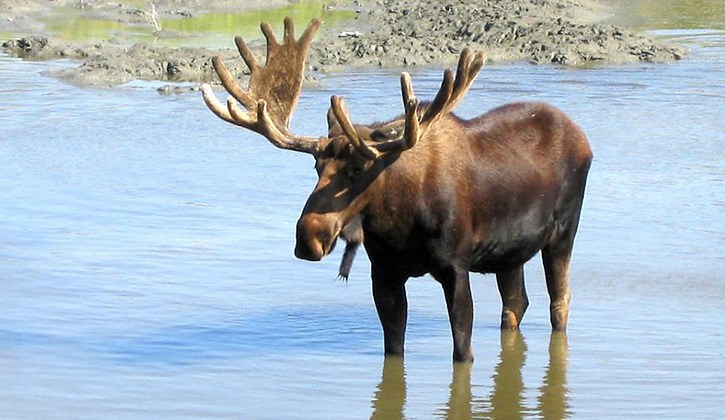The B.C. government is further reducing the number of moose hunt permits and developing new industrial restrictions in an effort to halt the decline of moose populations around B.C.
Limited-entry hunting permits for moose cows and calves are reduced to 200 for this year, down from 1,792 in 2011, Forests Minister Steve Thomson announced this week.
The ministry is also increasing funding by $1.2 million to implement recommendations from wildlife consultant Al Gorley’s report in July, including greater moose habitat protection in future forest and industrial developments.
Gorley reported that declines in moose population mainly correspond with salvage logging of timber affected by mountain pine beetle infestation. He said it’s unlikely that poaching is a major factor, although “doubts exist in areas where large numbers of resident hunters converge on an area for a short period and in areas where recent timber salvage operations have left extensive road networks with few control points.”
Aboriginal communities are not subject to B.C.’s Wildlife Act, and “self-manage their moose harvest to varying degrees,” usually through “community persuasion and influence,” Gorley said.
Moose populations are declining in the Kootenay, Cariboo and Omineca regions, representing about half the area of B.C.
Species at risk consultation starts
B.C. residents have until Nov. 30 to provide their ideas for protecting species at risk in B.C.
The environment ministry has set up a dedicated website here to collect suggestions from the public on new ways to improve monitoring, research and stewardship of species.
The website includes information on current efforts to protect the northern spotted owl, northern leopard frog, western rattlesnake and whitebark pine, with new stories posted each week through the six-week engagement period.
Environment Minister Mary Polak said the public input will be used to assess existing protection programs and develop new ones.
